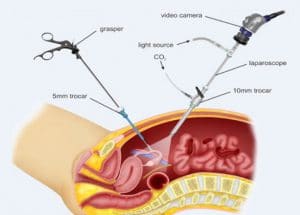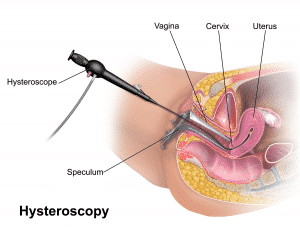Uses of Hysteroscopy


Hysteroscopy is a minor surgery that may be done in a doctor’s office or operating room with local, regional, or general anesthesia. In some cases, little or no anesthesia is needed. the procedure poses little risk for most women. Hysteroscopy may be used for diagnosis, treatment, or both.
Diagnostic Hysteroscopy
Hysteroscopy can be used to diagnose some problems in the uterus. it also can be used to confirm the results of other tests, such as hysterosalpingography(HSG)
The Hysteroscope is sometimes used with other instruments or techniques. For instance, it may be done before dilation and curettage (D&C) or at the same time as laparoscopy. In a D&C, the cervix is widened (dilation) and part of the lining of the uterus is removed (curettage). In laparoscopy surgery, a slender, telescope-like device is inserted into the abdomen through a tiny incision (cut) made through or just below the navel. Hysteroscopy also may be used for other conditions.
Abnormal Uterine Bleeding. A woman has this condition if she has heavier or longer periods than usual bleeds between periods, or has any bleeding after her periods have stopped at menopause Hysteroscopy may help the doctor and find the cause of abnormal bleeding that other methods have not found. It may be used to take a biopsy
Infertility. A couple may not be able to achieve pregnancy for a number of reasons. Sometimes the cause of female infertility is related to the defect in the shape or size of the uterus. One example of this is a separate uterus( a thin sheet of tissue divides the inside of the uterus into two sections). Hysteroscopy may find these problems if other tests do not.


Adhesions. Bands of scar tissiue, or adhesions, may form inside the uterus. This is called Asherman syndrome. These adhesions may cause infertility and changes in menstrual flow. Hysteroscopy can help locate adhesions.
Abnormal Growths. Sometimes bening growths, such as polyps and fibroids, can be diagnosed with the hysteroscope, Hysteroscopy mighthelp a doctor to biopsy a growth in the uterus to find out whether it may be cancer or may become cancer.
Displaced IUDs. An intrauterine device (IUD) is a small plastic device inserted in the uterus to prevent pregnancy. In some cases, it moves out of its proper position inside the uterus. It then embeds it self in the uterine wall or the tissue around it. Sometimes hysteroscopy can be used to locate an IUD.
The uterus is a muscular organ located in the pelvis. It is broad at the top and narrow at the bottom. At each side of the upper part, a follopian tube leads outword toword an ovary. The ovaries contain many eggs,or ova, and normally release one during each menstrual cycle. The tubes carry a fertilized egg from the ovaries to the uterus. The lower end of the uterus, Called the cervix, is a norrow channel with a small opening. It opens into the vagina.



